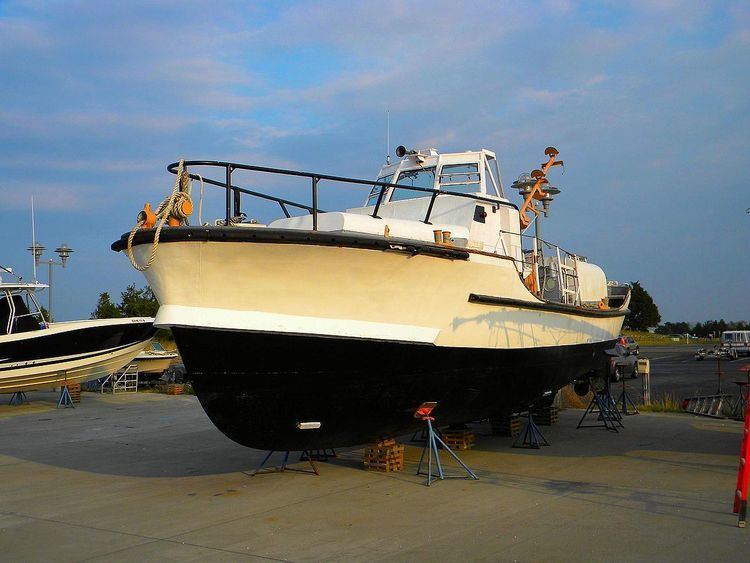Name 44' MLB Building 110 | Cost $225,000 (circa 1972) Displacement 17.5 t (19 short tons) | |
 | ||
Builders USCG Yard, Curtis Bay, Maryland, USAChantier maritimes du Saint-Laurent, Paspébiac, Quebec, Canada Operators United States Coast Guard Canadian Coast Guard Italian Coast Guard | ||
The 44-foot motor lifeboat was the standard workhorse of the United States Coast Guard (USCG) rescue boat fleet. The 44′ MLB has been replaced by the 47′ MLB. The boats are powered by twin diesel engines, that each power a separate propeller. The propellers are protected by the hull, to help prevent them being damaged if the boat runs aground. The boats have air-tight compartments forward and aft of the steering station. The aft compartment is designed to hold litters to strap in injured people, while the forward compartment hold uninjured rescues.
The magazine Popular Mechanics reported in 1966 that the then new fleet of 44 foot motor life-boats represented several "firsts". The vessels were the first steel-hulled motor lifeboats—earlier vessels had hulls of wood. The vessels were the first motor lifeboats where a single crew member handled both the engine throttle and steering wheel. The vessels were the first motor lifeboats designed to automatically right themselves if overturned.
The Canadian Coast Guard operated 18 lifeboats acquired in 1966 using United States Coast Guard specifications. Three other craft were obtained in 1975 and 1985 as training vessels.
Over the July 4th weekend of 1980 Richard Dixon, the coxswain of a 44-foot motor lifeboat from the US Coast Guard Station at Tillamook Bay lead his crew of four on two separate daring rescues, earning him the rare honor of two separate Coast Guard Medals.
